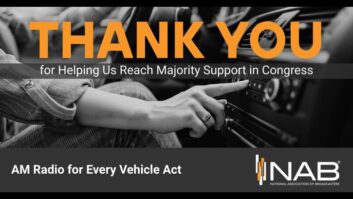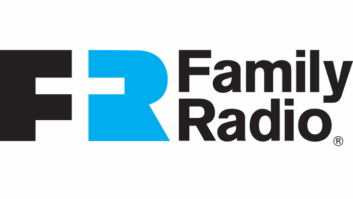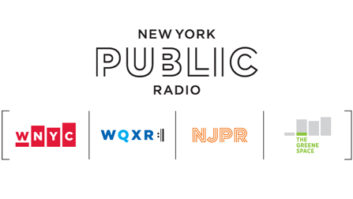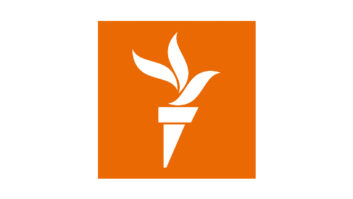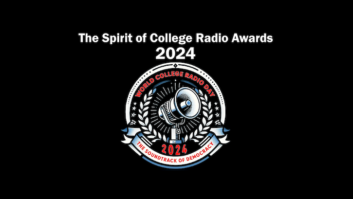In this letter to the editor, the author responds to Hal Kneller’s commentary “DRM Has Its Place, and It’s Not in the U.S.,” which was written in response to Alan Hughes’ article “The Modernization of Broadcast Radio.” Radio World welcomes letters to the editor on this or any story. Email [email protected].
I have read with interest the letter of Mr. Hal Kneller in response to the opinions of Mr. Alan Hughes on the modernization of broadcast radio. Some of the points I have found incorrect and in contradiction with my experience and knowledge of DRM.
I am a supporter of DRM in India and a current leader of an important grassroots group promoting DRM in our country of 1.4 billion people. My particular focus has been on cars with DRM receivers and there are over seven million of them. Over the past two years we have held demos and workshops in over 100 car showrooms all over our country.
With my understanding of DRM today, and my personal experience, I had to address some of the assertions and points made by Mr. Kneller, a previous DRM consortium member and ex-Ibiquity and Nautel employee.
Let me remind Mr. Kneller that the DRM standard is the one and only digital standard for all broadcast frequencies, while our DRM friends sometimes reference the band most used, i.e. DRM for AM and DRM for FM. No matter the “flavor” and the label, DRM is the one standard with the same characteristics, and delivering the same benefits, across all radio frequencies.
DRM is an “open” standard, and there are no secrets and contracts for using or applying it as the consortium does not have shareholders and is not-for-profit. No manufacturer must sign any license contracts to access DRM technologies or to start implementing them — so no per-use money to be paid by anyone, broadcaster or manufacturer, immediately or annually. Not only that, but in India, a car buyer does not have to pay for the DRM receiver on the dashboard as the car price includes it already.
As I read on the drm.org site, there is a one time per-device royalty for each device, and not each component of a device must be paid for intellectual property rights (which I am told is the universal, accepted policy for any modern and new equipment). I suppose this is the difference between open and proprietary, as anyone who knows both DRM and HD would be aware of. I know the DRM Consortium does not receive any IPR money for DRM products. Is this the same for HD?
As to digital radio DRM being more expensive than analog, this applies to all the three major broadcast standards including HD and DAB. The difference is that analog equipment can be updated to digital in DRM, while for DAB+ and HD one needs new infrastructure and network planning. On the other hand, DRM is saving significant costs (40–80% in AM and up to 90% in FM) in energy, which for my country and many others in Asia and other parts of the world is a serious consideration.
Hal Kneller rightly addresses the receiver situation and highlights the number of HD receivers in the USA. Are all the HD receivers used? Haven’t some car manufacturers dropped HD? Is HD so very popular in his country or well behind other media platforms?
He is right that there are no DRM receivers in the USA, though there is American high interest and activity to produce DRM receivers for the rest of the world. To tell you the truth, I have not seen any HD receivers in Hyderabad or my part of the world in India, either. Over seven million Indian cars have fitted DRM receivers and, once the government decides to digitize the FM band with DRM, there is a chance to software upgrade these receivers to digital FM.
Our DRM grassroots campaign has been aimed exactly at salespeople and users to show them all the things that Mr. Kneller suggests HD alone provides — like text, images, selecting stations by name, etc.
In our view, trying to get HD into India would be disastrous and unacceptable for the automotive industry and (other stakeholders, too). The car industry has invested millions of dollars in making DRM solutions for cars sold on the Indian market. They trust and believe in DRM.
I also must disagree with Mr. Kneller on the number of radio stations which he considers too high in the USA. Maybe so, but who decides when and where there are too many stations? This is up to the market, the spectrum availability and the listener, and not the technologists.
If there is no official mandate for use of HD why can’t DRM be allowed in the USA? Unbeknown to Mr. Kneller and his friends, it is already there, while its shortwave capability and data capabilities are being quietly exploited. Maybe ATSC 3.0 will use DRM for radio broadcasts, too.
This view of the world where DRM has no place in Europe (there are DRM transmissions from Europe at least to India, anyway), absolutely no place in the USA (in any case I can hardly wait to see the new cheap DRM receiver created in the USA and to be manufactured in India) and some places in Asia is very limiting.
If DRM has no place in the USA, then HD has no place in India, where it would create confusion, increase costs and undermine what has been achieved with DRM. Inflexible HD cannot offer simulcasting in 200 kHz, does not fit easily in the white spaces and does not match the technical setup of most Indian cities (with their common infrastructure set up) or the spectrum where HD analog and digital signals are stuck together and inhibit each other like bad neighbors.
Mr. Kneller thinks DRM is most useful in shortwave. A nice proposition prevalent 20 years ago when Indonesia, China, South Africa, Nepal, Pakistan and other countries had not looked at the DRM standard, adopted or broadcast using it in both AM and FM.
Advising countries that are abandoning analog AM and FM to go for DAB+ is disingenuous as Mr. Kneller must know that large countries in Asia, Africa and Latin America will never be able to afford or achieve full-country coverage with an expensive 40-year-old system like DAB. It is almost irresponsible to suggest to countries, still struggling with TV digitization, and where band III is not yet available, to introduce the ultra-local, band III-only standard which is DAB.
Radio is universal and ubiquitous. It has its own characteristics and challenges, but it must remain as DRM says, digital radio for all. Nobody can advocate for geographic limitations because then we can very seriously say that if DRM is not welcomed by some in the USA, then neither will HD Radio, with all its shortcomings, in India.
[Check Out More Letters at Radio World’s Reader’s Forum Section]
